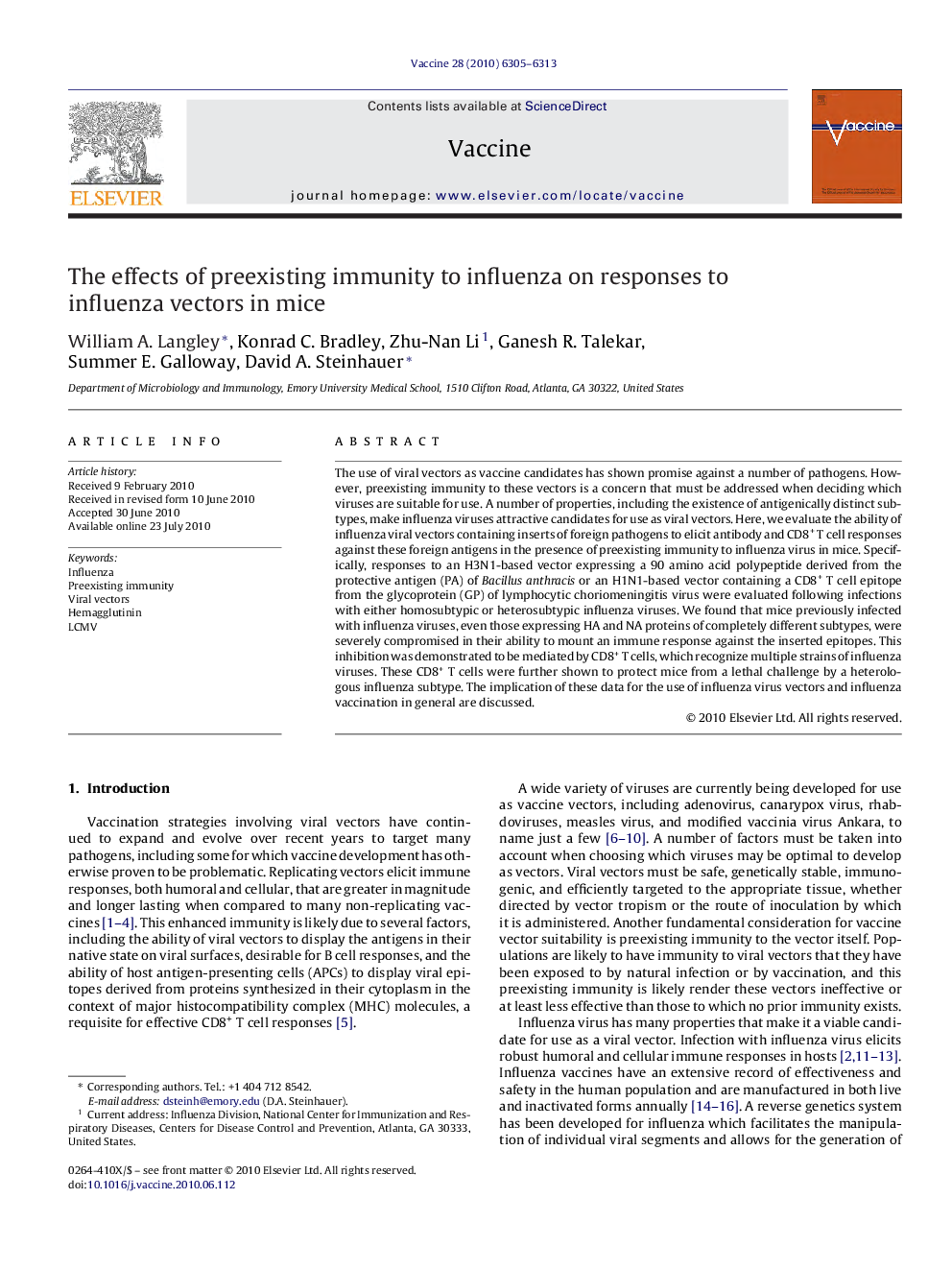| Article ID | Journal | Published Year | Pages | File Type |
|---|---|---|---|---|
| 2404277 | Vaccine | 2010 | 9 Pages |
The use of viral vectors as vaccine candidates has shown promise against a number of pathogens. However, preexisting immunity to these vectors is a concern that must be addressed when deciding which viruses are suitable for use. A number of properties, including the existence of antigenically distinct subtypes, make influenza viruses attractive candidates for use as viral vectors. Here, we evaluate the ability of influenza viral vectors containing inserts of foreign pathogens to elicit antibody and CD8+ T cell responses against these foreign antigens in the presence of preexisting immunity to influenza virus in mice. Specifically, responses to an H3N1-based vector expressing a 90 amino acid polypeptide derived from the protective antigen (PA) of Bacillus anthracis or an H1N1-based vector containing a CD8+ T cell epitope from the glycoprotein (GP) of lymphocytic choriomeningitis virus were evaluated following infections with either homosubtypic or heterosubtypic influenza viruses. We found that mice previously infected with influenza viruses, even those expressing HA and NA proteins of completely different subtypes, were severely compromised in their ability to mount an immune response against the inserted epitopes. This inhibition was demonstrated to be mediated by CD8+ T cells, which recognize multiple strains of influenza viruses. These CD8+ T cells were further shown to protect mice from a lethal challenge by a heterologous influenza subtype. The implication of these data for the use of influenza virus vectors and influenza vaccination in general are discussed.
